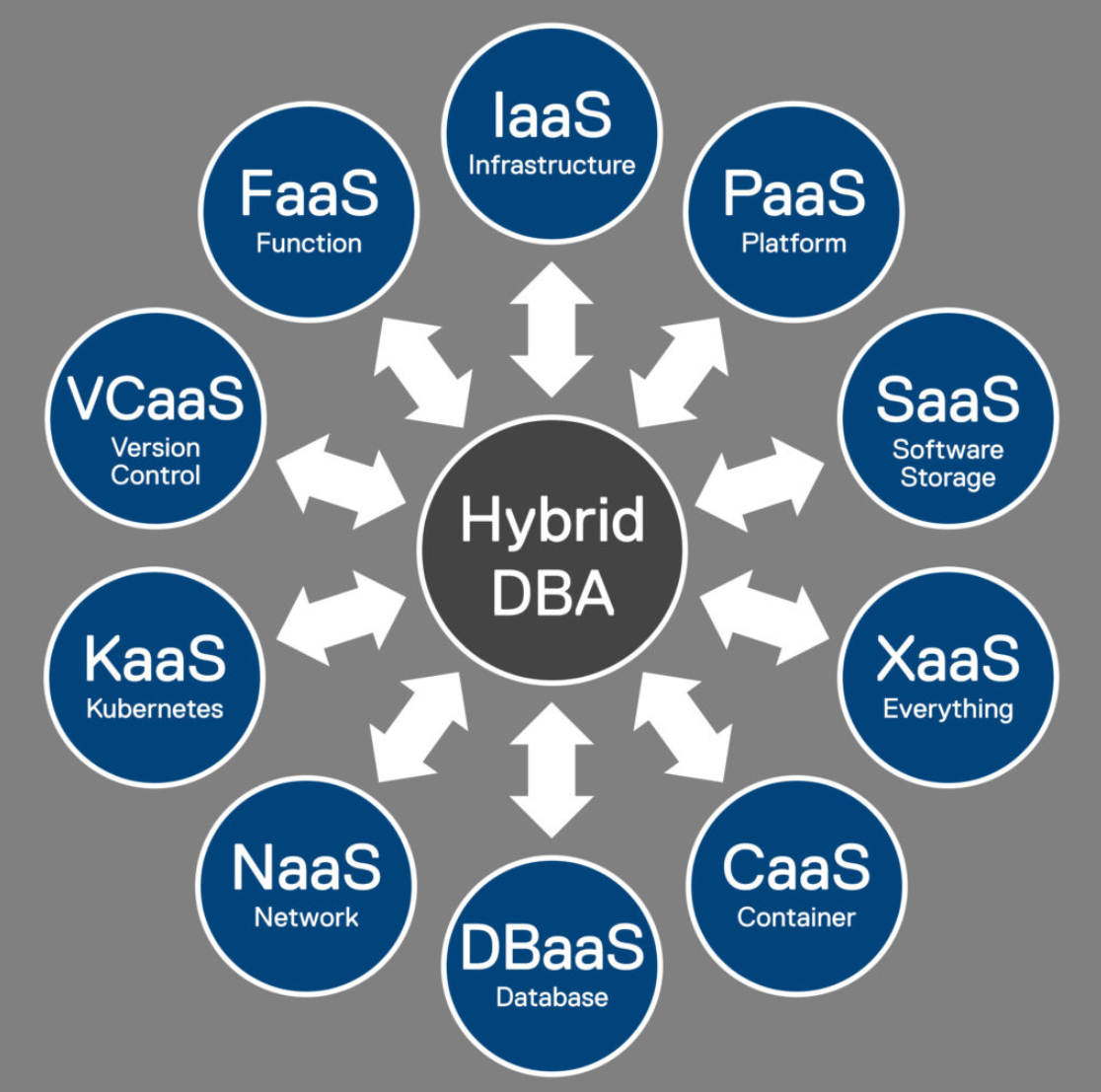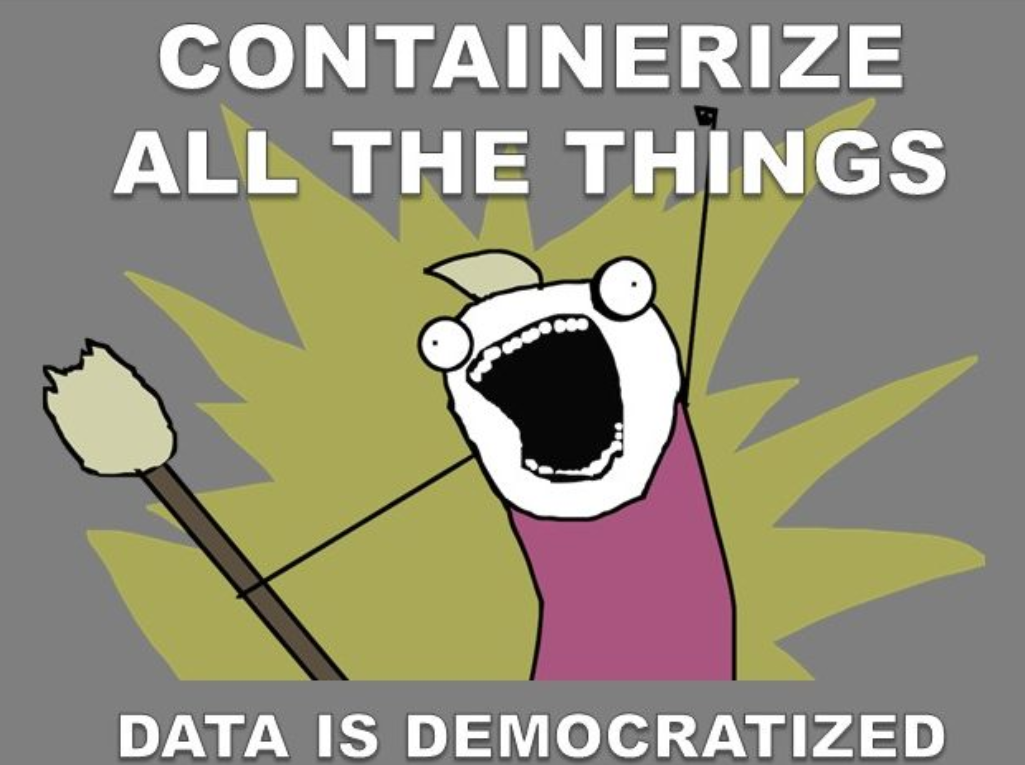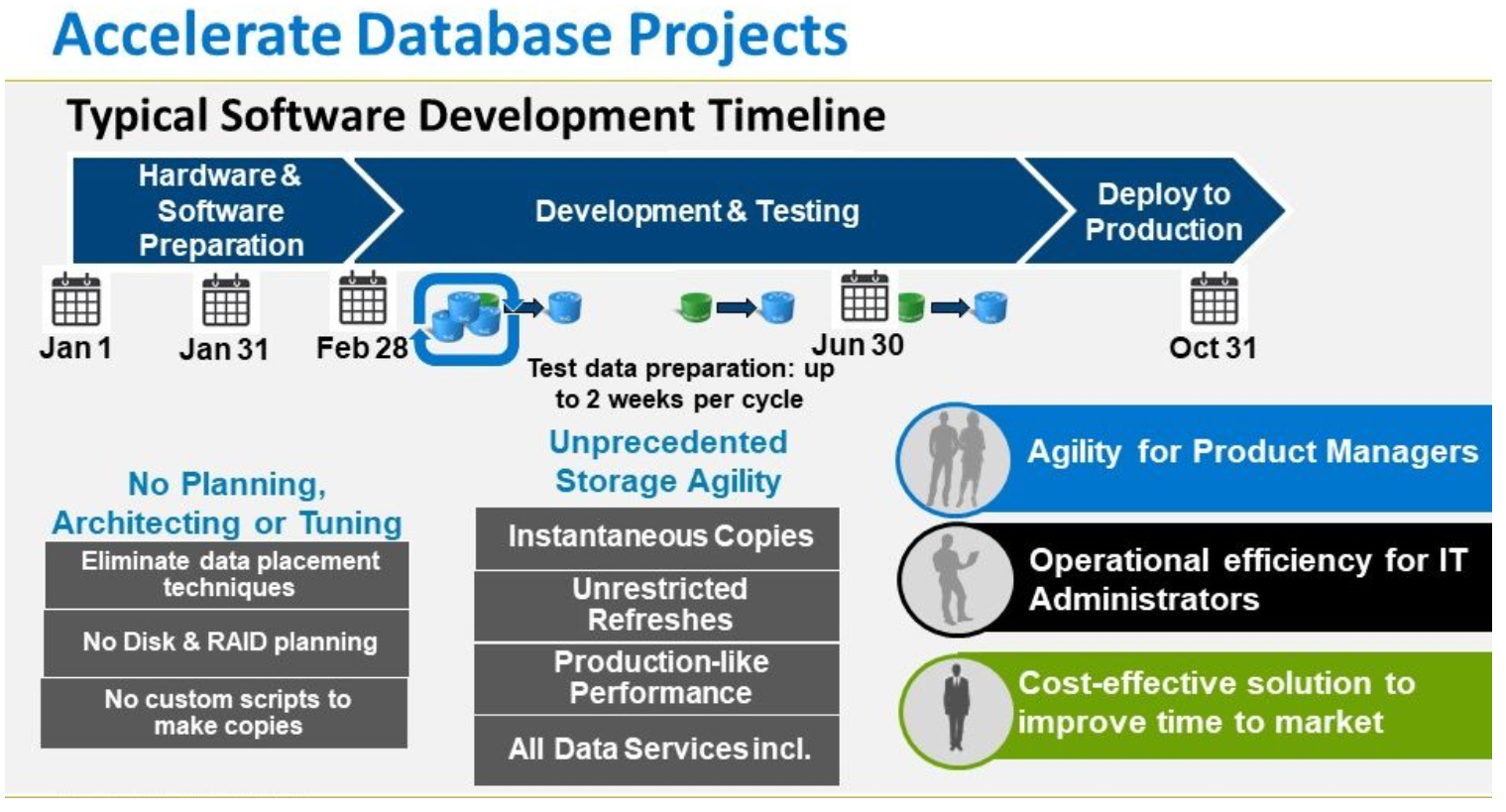

The new DBA role—Time to get your aaS in order
Mon, 03 Aug 2020 16:07:49 -0000
|Read Time: 0 minutes
Yes, a “catchy” little title for a blog post but aaS is a seriously cool and fun topic and the new DBA role calls for a skill set that’s incredibly career-enhancing. DBA teams, in many cases, will be leading the data-centric revolution! The way data is stored, orchestrated, virtualized, visualized, secured and ultimately, democratized.
Let’s dive right in to see how aaS and the new Hybrid DBA role are shaking up the industry and what they’re all about!
The Future-ready Hybrid DBA
I chatted about the evolution of the DBA in a previous blog within this series called Introduction to SQL Server Data Estate Modernization. I can remember, only a few short years ago, many of my peers were vocalizing the slow demise of the DBA. I never once agreed with their opinion. Judging from the recent data-centric revolution, the DBA is not going anywhere.
But the million-dollar question is how will the DBA seamlessly manage all the different attributes of data mentioned above? By aligning the role with the skill that will be required to exceed in exceptional fashion.
Getting Acquainted with the aaS Shortlist
To begin getting assimilated with what aaS has in store, the DBA will need to get his/her aaS in order and become familiar with the various services. I am not a huge acronym guy (in meetings I often find that folks don’t even know the words behind their own acronyms), so let’s spell out a shortlist of aaS acronyms, so there’s no guesswork at their meaning.
And this is by no means is a be-all-end-all list – technology is advancing at hyper-speed – as Heraclitus of Ephesus philosophized, “Change is the only constant in life.”

Why all this aaS, you ask?
Because teams must align with some, if not all of these services, to enable massive scalability, multitenancy, independence and rapid time to value. These services make up the layers in the cake which comprise the true solution.
Let’s take SQL Server 2019, for instance, a new and incomparable version that’s officially generally available and whose awesome goodness will be the topic of many of my blogs in 2020!
SQL 2019 Editions and Feature Sets
I started with SQL Server 6.5, before a slick GUI existed. Now, with SQL 2019, we have the ability to manage a stateful app, SQL Server, in a container, within a cluster, and as a platform.
That is “awesome sauce” spread all around!
And running SQL Server 2019 on Linux? We’re back to scripting again. I love it! Scripting is testable, repeatable, sharable, and can be checked into source control. Which, quite simply, enables collaboration, which in turn makes a better product. You’ll need to be VCaaS-enabled to store all these awesome scripts.
Is your entire production database schema in source control? If it isn’t, script it out and put it there. A backup of a database is not the same as scripting version control. DBA’s often tell me their production code resides in the database, which is backed up. It’s best practice, however, to begin your proven, repeatable pattern by scripting out the DDL and checking into and deploying from a VCaaS. Aligning your database DDL and test data sets with a CI/CD application development pipeline, should be addressed ASAP. By the way, try this with ADS (Azure Data Studio) and the dacpac extension. Many of the aaSes can be managed with ADS. And, with the #SQLFamily third-party community – the ADS extension tooling will only continue to grow.
DBA as a DevOps Engineer?
Reading this blog as a DBA, you may be thinking I don’t need to know about all these aaS details. Simply put, yes, you do! In many respects, the DBA is now the new DevOps engineer, utilizing all the services listed above. This hybrid role is becoming more of a full stack developer – providing support for multiple scripting languages, an “IT Polyglot.”
Moreover, as a DBA, you are already executing on all of these attributes, and you may not even know it! It turns out that DBAs have always been a part of DevOps. Think about it, you align with Dev — like writing SQL, tuning performance, doing Object Analysis and reporting — and you already do Ops — like, configuring servers and VMS, running backups and restores, and tuning the OS, network and storage. So, you are uniquely positioned to now offer all this as a service.
Congratulations! Your organization is looking to you to lead the charge as the data-centric view of “all things” has arrived!
The Hybrid DBA Role and His or Her Requisite “aaSes”
Let’s look deeper into the chain of services.
As a hybrid DBA, you want to provide DBaaS. What will you need to provide, and understand from a tooling perspective? Well, you are going to need to understand IaaS. Infrastructure as code, to define and automate your core database target workload servers. You will be grouping these services into networking namespaces, there is a bit of NaaS alignment. Even more services if you have data sources residing in a public or on-premises cloud. Maybe you have a FaaS-enabled in a public cloud, that is writing to an unstructured data store. A FaaS, remember, can very much be the replacement for older ETL processes.
Next for agility, let’s containerize these things using CaaS. What will you need to manage and orchestrate those containers? KaaS or Kubernetes which provides the opportunity to build a SQL 2019 Big Data Cluster. In theory, you could say the Kubernetes platform is PaaS with the flexibility of IaaS. Now we are mixing aaS’s together for maybe yet another acronym. :)
Have you started noodling around with SQL 2019 yet? No? Why not? Microsoft has done an incredible job ramping up the product for its launch. I highly recommend jumping in and starting to play with it!
The core Microsoft SQL Server team has put together this excellent reference for SQL 2019 to get you started.
As a DBA, you can then provide PaaS in a few different ways. Again, DBaaS is one form of PaaS. You have a true Data Virtualization layer with SQL 2019 that can also provide PaaS for sourcing across all the data sources – simply with a T-SQL script and PolyBase External Table. That you will enable! There are also many self-service reporting enablement features with PowerBI.
Here is where I like to say XaaS enables data virtualization!

The Beneficial Impact of the Hybrid DBA on Various BUs
I also hear, from the App owners and IT decision makers, that the database team must react to requests, at a much faster rate than the previous norm.
The hybrid DBA will accelerate the cycles for many, if not all, of these business units in the following ways:
Product Managers and Enterprise Architects
- Reduced/eliminated waits for infrastructure
- Simultaneous features/projects
- Improved and reliable software quality
- Governance around data management and access
Infrastructure Administrators
- Drastic reduction in turn-around times
- Operational simplicity
- Reduced human errors through automation
Developer teams
- Accelerate iterations of testing and development
- Secure data sets – infused into the DevOps cycles
- Production deployments with database alters
LOB Executives
- Lower CapEx for storing multiple copies
- Improved employee productivity
- Faster time to market

Embrace the Containerized World
Big Data Clusters run on a Linux platform on containers within a Kubernetes Cluster. Remember, SQL Server on Linux is the same codebase as SQL Server on Windows. With the only difference being the SQLPAL (SQL Platform Abstraction Layer) and a host extension. This host extension allows SQL Server to interact with the Linux kernel. The hybrid DBA will need to understand how containers are managed and provisioned. Ensuring a solid storage foundation is paramount here, before embarking on containers in production. (*Hint:* Dell Technologies is really good at this!). Additionally, the hybrid DBA should also embrace PowerShell, Bash, R and Python. All in the name of more intelligent tooling across a wide range of modern development platforms and technologies.
If, as a DBA, you are concerned, worried, or downright scared of a containerized world and orchestrator like Kubernetes, no need to worry at all. In fact, there are similarities that you will absolutely love. With K8s there is a declarative object configuration management technique, which is recommended in production.
The Declarative Perspective and Release of SQL 2019
Something else is declarative that we know and love: SQL Server. Declarative languages let users or administrators express a desired state or query. In the case of SQL Server, they want to retrieve as a result, providing broad instructions about what tasks are to be executed and completed. Then, the declarative engine goes to work. You then deal with the results, not the process or automation. Kubernetes and SQL Server, from a declarative perspective, act exactly the same way. I say this because data professionals, especially the DBA, are wired a certain way. They like patterns and they like to declare, “Here is my work to do, go make it happen”.
With the release of SQL 2019, the Hybrid DBA will continue to be in the driver’s seat. You will now administer from the edge (SQL Server Edge) to on-premises SQL Server to additional SQL workloads that may also be in a public cloud. To that end, any cloud, all with SQL Server. Companies large and small will benefit from intelligent SQL Server deployments.
Dell Technologies Is Here to Help You Succeed
Dell Technologies, as your company’s trusted advisor, is positioned and aligned to help you right now with our solutions and services! We also have whitepapers on SQL 2019 available for your reference to help determine which solutions are correct for your workloads.
Dell Technologies offers solutions and services to address hyper-scale data requirements and next-gen hybrid, including:
- Modernize Your SQL Server platform with Consulting Services
- SQL Server 2019 – Containers on Linux
- SQL Server Info Hub
- Winning the New Era of Data Management
- PowerMax Storage – Mission Critical Storage
- ZDNet Japan (Please use Google Translation to read in English)
Many more solutions will become available in the very near future. Why wait? A Dell Technologies Service Expert is ready and able to help you get your aaS in order!
Summary
The hybrid DBA needs to abide to the creed of #neverstoplearning. If you’re stuck and complacent, you will get passed up. There really is no excuse. The cloud playground options are abundant, at minimal or no cost, to play and learn within these environments. Everything in the aaS table above can be vetted and tested within a public or on-premises cloud environment.
Learning a new technology can be simple and fun. Do what I do. Make learning part of your daily life. Carve out a minimum of 2-hour blocks, 5 days a week, and maybe an additional Saturday or Sunday morning to simply play with tech and learn. It works, and you will be much better off in the long run. Personally, some of my best learning happens on a quiet Sunday morning when the email and phone requests are non-existent.
What changes are you willing to incorporate into your daily routine to keep your skills fresh and relevant?
Other Blogs in This Series
Best Practices to Accelerate SQL Server Modernization (Part I)
Best Practices to Accelerate SQL Server Modernization (Part II)
Introduction to SQL Server Data Estate Modernization
Recommended Reading
Running Containerized Applications on Microsoft Azure’s Hybrid Ecosystem – Introduction
Deploy K8s Clusters into Azure Stack Hub User Subscriptions
Deploy a Self-hosted Docker Container Registry on Azure Stack Hub



